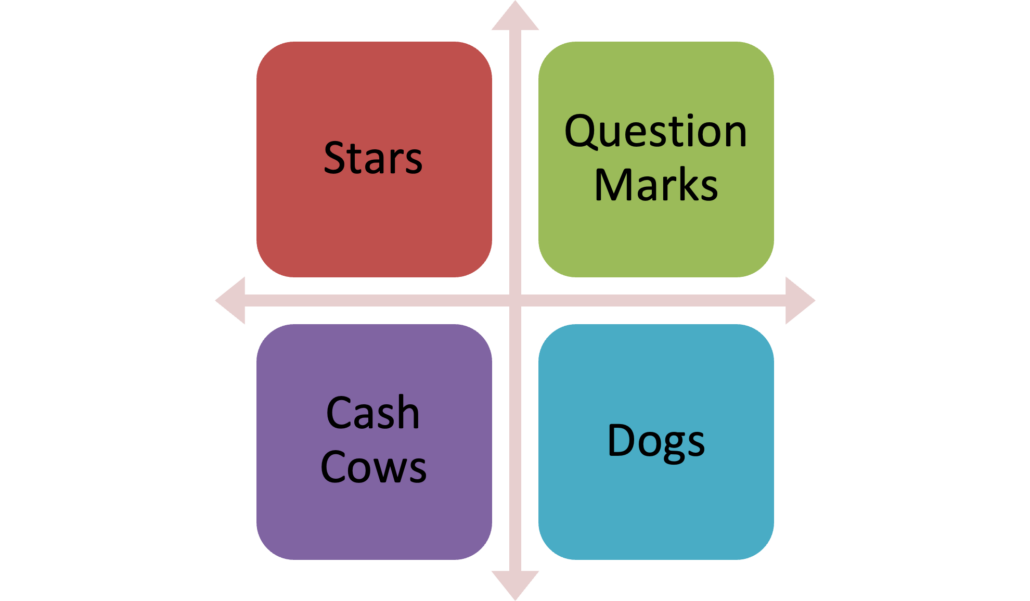
Developing a product strategy means carrying out research, intensive market testing, and analysis. This allows the company to reduce the risk of losing all investment. If a product fails at the first step, the company knows that it is not wise to invest in the later stages of the product development process.
However, if the company does not go about new product development strategically, it might incur huge losses that tarnish its brand image, stakeholder trust, and its financial position.
Start anew?
At times, even starting from scratch is not a wise decision. Even following the 7-step strategy process can go to waste if it doesn’t consider its existing position and brand image. A successful product development strategy means that the company takes a look at its strengths, weaknesses, opportunities, and threats before investing in product development. At times, just a slight product improvement can help the company reap loads of profits.
In this guide, we will talk about the process that ensures successful product development. You will learn all about the product development strategy, its comprehensive 7-step process, some product development strategy examples, and benefits.
What is a product development strategy?
If someone asks to define a product development strategy, the answer is simple – it encompasses the steps, actions, and methods to introduce new or modified products in the market. The strategy’s step-by-step approach assures that the product is successful in the market and reaps a profit for the company.

The step-by-step methodology makes use of market research to overcome obstacles and modify the product to convert it into something that sells in the market. Although the step-by-step approach takes time and requires investment, it mitigates the risk associated with launching a modified product.
However, there is a difference between product development and new product development. We first explore product development then get to new product development.
When should a company create a product development strategy?
The best product development strategy for most established firms is to start with their old products. To understand the different kinds of existing products, we need to delve into the BCG Matrix:
BCG Matrix
The BCG Matrix is a managerial tool to categorize a company’s products into types based on the market’s growth rate and the relative market share of the company.

If a company is operating in a market with a low growth rate with a huge market share, the product is a cash cow. On the other hand, if the market growth rate is high and the relative market share is also high, the company has a huge opportunity. The products in this area are stars.
In a market share where the growth is low and market share is also small, the products are classified as dogs. Companies mostly divest in these products since they don’t have a huge potential to earn profits. The products in industries with high market growth and low market share are question marks. They have the possibility to turn into stars and become profitable for the company.
What is new product development strategy?
Companies invest in new product development if they are new. According to the Ansoff Matrix, that means they are developing a new product for a new market.
But on the flip side, once the company has categorized its existing products, it can decide whether it wants to enter a new market with its existing products or create a new product for the existing market. However, it also has the option to improve its existing products for existing markets or venture into a new market with new products.
| New Markets | Market Development | Diversification |
| Existing Markets |
Market Penetration |
Product Development |
| Existing Products | New Products |
What are the steps to create a strategy for new product development?
There are at least 7 steps involved in a new product development strategy. These steps start with idea generation and end at commercialization of the product. Let’s delve into each of these steps:
1. Idea generation
The first step to create a new product or modify an existing product is idea generation. This includes searching for a problem, a pain point, or a market gap. Many companies use tools like focus groups, one-on-one interviews, and surveys to get an idea of what problems the customer faces.

But at times even these tools don’t yield good ideas. Some companies pay people to observe them work around their house and identify the problems that they incur every day.
2. Product concept testing
Once there is a list of ideas, they are then screened for one or a couple of ideas for concept testing. The concept testing phase includes prototype development and utilizing focus groups for testing out the prototype’s success.
In this phase, the company determines whether the product performs as intended.

3. Market and business analysis
At the third stage, the company assesses the product’s functionality and figures out any problems. At this stage, the company must be sure that the product is ready to be accepted onto the market.
4. Product manufacturing
When the product is tested for issues and modified accordingly, it is time to mass manufacture the product. If the company jumps to this stage right after the idea generation process instead of going through concept testing and market analysis, it might fail miserably.
Consider mass manufacturing a new flavor of chips that most of the audience does not like. This will deem all efforts and investment made in manufacturing and marketing down the drain. This highlights the importance of a product development strategy.
5. Market testing
Once the product is manufactured on a wide scale, it is tested out in a small market. Most companies test out the product’s success and acceptability in one city before launching it nationwide. At this stage, the company has a chance to assess the marketing of the product and the reaction of the target audience.
6. Commercialization
Based on market testing, the product goes through a final modification before it is manufactured and rolled out commercially.

All these steps show how to develop product strategy from start to finish. All the steps involved in developing product strategy are thorough and could last anywhere between a few weeks to a few months depending on the market size and product complexity.
New product development strategy examples
While the 7-step process is a generic way that products must be launched into the market, the way the idea is generated can differ greatly. This difference can lead to different ways the product is innovated.
For inspiration, here are some useful product development strategy examples:
1. Upgraded products
In many cases, just a slight modification in your current product can attract your existing customers as well as new customers. These kinds of product ideas often come from customer feedback.
For instance, if a dog cycle could perform better with a slight material change, the newer version is bound to interest existing and new audiences.
2. Increase product value
In many cases, a small upgrade like a fabric change might not appeal to existing audiences. The company will have to include additional value with the product. For instance, adding a warranty to the product or an increased quantity might help draw customers – both new and existing.

3. Offer a trial
Many companies offer free samples of the new product with an existing product or sell less expensive samples for market testing. This allows them to assess the customer’s willingness to pay the full price and gather customer feedback.

4. Specialize and customize
Products that are not mass manufactured could be changed to offer customizations. For instance, water bottles with names rather than generic designs could appeal to both existing and new audiences. However, not all products can be specialized and customized.
5. Acquire new companies
Another great way to add new products to a company’s portfolio is acquisition. For instance, Disney acquired Pixar to add modern animation technology to its portfolio and develop films with greater value.
Many huge companies also acquire small businesses to eliminate competition and the long product development process. Acquisition also gives them access to the consumer base that these small businesses have.
6. Find new markets
A new market could respond quite well to existing products. A new market could mean a new city, a new country, or a new target audience. For instance, McDonald’s started as a burger joint, but began targeting children with its Happy Meal and toys – expanding its sales immensely.
The above-mentioned product development strategies are all examples that companies have used. However, many big names have failed even after following a product development strategy. Some examples include:
- The McDonald’s Arch Deluxe intended for sophisticated audiences – caused a $100 million loss.
- Samsung’s Galaxy Note 7 – Occasionally exploded.
- Microsoft’s Zune – iPod competitor that failed miserably.
Advantages and disadvantages of a product development marketing strategy
While the product development strategy does help mitigate the risk, it does not completely eliminate it. There are still a lot of risks when it comes to coming up with new products or modifying existing products.
Take the example of the Samsung Galaxy Note 7. It was a successor in the Galaxy series but did not do well because of a fault that could have been noted in the concept testing process.
That being said, here are some of the product development strategy advantages and disadvantages that you ought to know about before delving into the process:
● Disadvantage: Marketing strategy for product development could backfire
Even if you have an excellent product, without the right marketing, it could backfire. Consider McDonald’s Arch Deluxe for the urban sophisticates. Turns out that the product was fine, but the market was still not ready to accept expensive burgers. Today, burger joints offer premium burgers to audiences and enjoy loads of sales.

● Disadvantage: Does not take the competition into account
While the market testing phase does include assessing the competitor, when the product is rolled out to the wider audience, competition could behave in different ways. They could respond by launching a similar product or lower their prices to avoid losing market share.
● Advantage: Help get rid of dogs and underperforming question marks
Underperforming products are a liability. However, a product development process that’s going successfully could help the company make decisions about its existing underperforming products and allocate its resources to the new product.
● Advantage: Allows the company to modify the product
While the process seems long and tiresome, the advantage is that it allows time to modify the product. If the company finds an issue during the concept testing phase, it could step back to change it again. On the other hand, if the product does not perform well during the market testing phase, the company could make little modifications based on feedback and test the product again.

Bottom Line
New products aur launched into the market every day. However, not all these products do well. Even with the seven-step product development process, the risk is never zero.
Pimberly has a product information management (PIM) system that allows you to track your product’s performance and pull it or push in in the market strategically.













